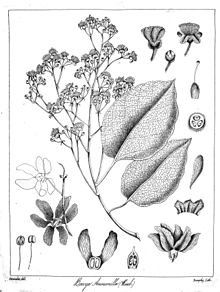
Arable land is any land capable of being ploughed and used to grow crops. Alternatively, for the purposes of agricultural statistics, the term often has a more precise definition:
Arable land is the land under temporary agricultural crops, temporary meadows for mowing or pasture, land under market and kitchen gardens and land temporarily fallow. The abandoned land resulting from shifting cultivation is not included in this category. Data for 'Arable land' are not meant to indicate the amount of land that is potentially cultivable.
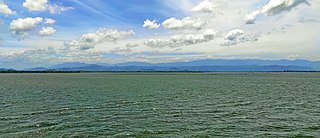
Udawalawe National Park is a national park on the boundary of Sabaragamuwa and Uva Provinces in Sri Lanka. The park was created to provide a sanctuary for wild animals displaced by the construction of the Udawalawe Reservoir on the Walawe River, as well as to protect the catchment of the reservoir. The reserve covers 30,821 hectares (119.00 sq mi) of land area and was established on 30 June 1972.

Sida cordifolia is a perennial subshrub of the mallow family Malvaceae native to India. It has naturalized throughout the world, and is considered an invasive weed in Africa, Australia, the southern United States, Hawaiian Islands, New Guinea, and French Polynesia. The specific name, cordifolia, refers to the heart-shaped leaf.

Mackworth Island is an approximately 100-acre (40 ha) island in Casco Bay, Maine, United States. Politically, it is part of the town of Falmouth, which is adjacent to Portland. In 1631, Sir Ferdinando Gorges, who first attempted to colonize Maine, gifted the island to Arthur Mackworth, his deputy in Casco Bay, and the island has retained his name. A causeway, which carries the traffic of Andrews Avenue, connects the island to Mackworth Point on the mainland. Visitors to the island must pass a state park entrance tollhouse and pay an entrance fee; cars can enter the island, but parking is limited. There is a footpath around the perimeter of the island with views of Falmouth, Portland, and other islands surrounding the bay. The island is heavily wooded and one portion of those woods is dedicated to “Fairy Houses” which are constructed by visitors using natural materials found on the island. Mackworth Island has a beautiful rocky shore and offers ample opportunities for surf fisherman of Bluefish and Stripers. Although most areas of the island are State Park lands, there is a school area that is not open to the public. The island is also home to the Governor Baxter Dog Memorial, a pet cemetery where fourteen of the former governor's Irish Setters and one of his horses were laid to rest, accompanied by two bronze markers and a gravestone, all enclosed by a circular stone wall.

Anredera cordifolia, commonly known as the Madeira vine or mignonette vine, is a South American species of ornamental succulent vine of the family Basellaceae. The combination of fleshy leaves and thick aerial tubers makes this a very heavy vine. It smothers trees and other vegetation it grows on and can easily break branches and bring down entire trees on its own. Other names include lamb's tail and potato vine.

Afrocarpus falcatus is a species of tree in the family Podocarpaceae. It is native to the montane forests of southern Africa, where it is distributed in Malawi, Mozambique, South Africa, and Eswatini. Common names include common yellowwood, bastard yellowwood, outeniqua yellowwood, African pine tree, weeping yew, Afrikaans: outeniekwageelhout, kalander, Sotho: mogôbagôba, Xhosa: umkhoba and Zulu: umsonti. It is widespread, in some areas abundant, and not considered threatened, but it is a protected tree in South Africa. It is grown as an ornamental tree, especially in South Africa, and occasionally abroad.

Eucryphia cordifolia, the ulmo, is a species of tree in the family Cunoniaceae. It is found in Chile and Argentina. It is threatened by logging and habitat loss. The natural habitat is along the Andes Range from 38 to 43°S, and up to 700 meters (2300 ft) above sea level. It is a very elegant tree with a thick trunk and wide crown and can become over 12 m (39 ft) high. It blooms in February and March, depending on latitude and altitude. The fruit is a capsule about 1.5 cm (0.6 in) length.
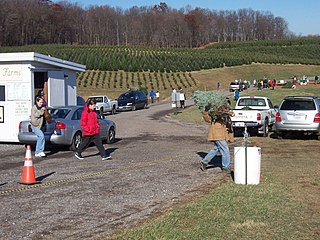
Christmas tree production occurs worldwide on Christmas tree farms, in artificial tree factories and from native strands of pine and fir trees. Christmas trees, pine and fir trees purposely grown for use as a Christmas tree, are grown on plantations in many western nations, including Australia, the United Kingdom and the United States. In Australia, the industry is relatively new, and nations such as the United States, Germany and Canada are among world leaders in annual production.
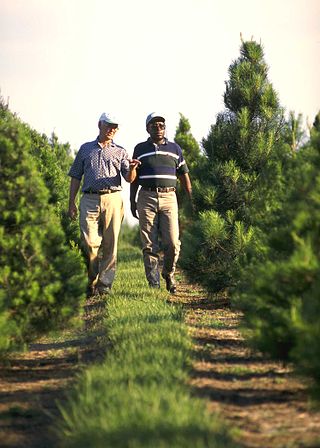
Christmas tree cultivation is an agricultural, forestry, and horticultural occupation which involves growing pine, spruce, and fir trees specifically for use as Christmas trees.

Christmas tree production in Canada totals from 3 to 6 million trees annually. Trees are produced in many of the provinces of Canada but the nation's leading producers are found in Quebec, Nova Scotia and Ontario, which account for 80 percent of Canadian tree production. Of the 900,000 trees produced annually in British Columbia, most are cut from native pine stands.

Rubia cordifolia, known as Indian madder, is a species of flowering plant in the coffee family, Rubiaceae. It has been cultivated for a red pigment derived from roots.
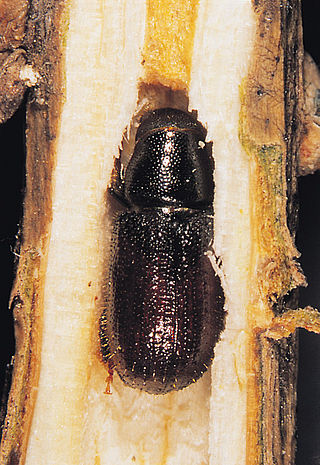
Tomicus piniperda, the common pine shoot beetle, is a bark beetle native throughout Europe, northwestern Africa, and northern Asia. It is one of the most destructive shoot-feeding species in northern Europe.

Alchornea cordifolia is a shrub or small tree distributed throughout tropical Africa, it can grow up to 8 metres tall. The plant is used in traditional African medicine. Common name is the Christmas bush.

Christmas in Indonesia, locally known as Natal from the Portuguese word for Christmas, is celebrated with various traditions throughout the country.

Charlotte Frances Riley is an English actress. She is known for her roles as Sarah Hurst in Easy Virtue (2008) and as Catherine Earnshaw in ITV's adaptation of Wuthering Heights (2009).

Vitis vulpina is a North American species of herbaceous perennial vines in the grape family. It is widespread across most of the eastern and central United States as well as the Canadian Province of Ontario.

Coconut production contributes to the national economy of Sri Lanka. The scientific name of the coconut is Cocos nucifera. Sri Lanka there are three varieties, tall variety, dwarf variety and King coconut variety. According to figures published in December 2018 by the Food and Agriculture Organization of the United Nations, it is the world's fourth largest producer of coconuts, producing 2,623,000 tonnes in 2018.
Brana is a monotypic moth genus of the family Noctuidae. Its only species, Brana calopasa, is found in Sri Lanka and Australia. Both the genus and species were described by Francis Walker, the genus in 1858 and the species in 1859. It It is a serious pest on Berrya cordifolia.
Gelonaetha hirta, commonly known as Hibiscus Long-horned beetle, or Long horn teak borer, is a species of longhorn beetle. It is distributed in Sri Lanka, India, Myanmar, Thailand, Laos, Hainan Island, Taiwan, Borneo, Philippines, Micronesia, Polynesia and West Indies.
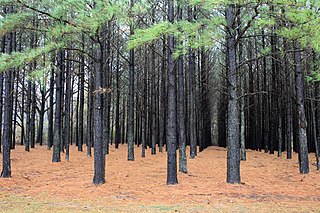
A tree plantation, forest plantation, plantation forest, timber plantation or tree farm is a forest planted for high volume production of wood, usually by planting one type of tree as a monoculture forest. The term tree farm also is used to refer to tree nurseries and Christmas tree farms.
